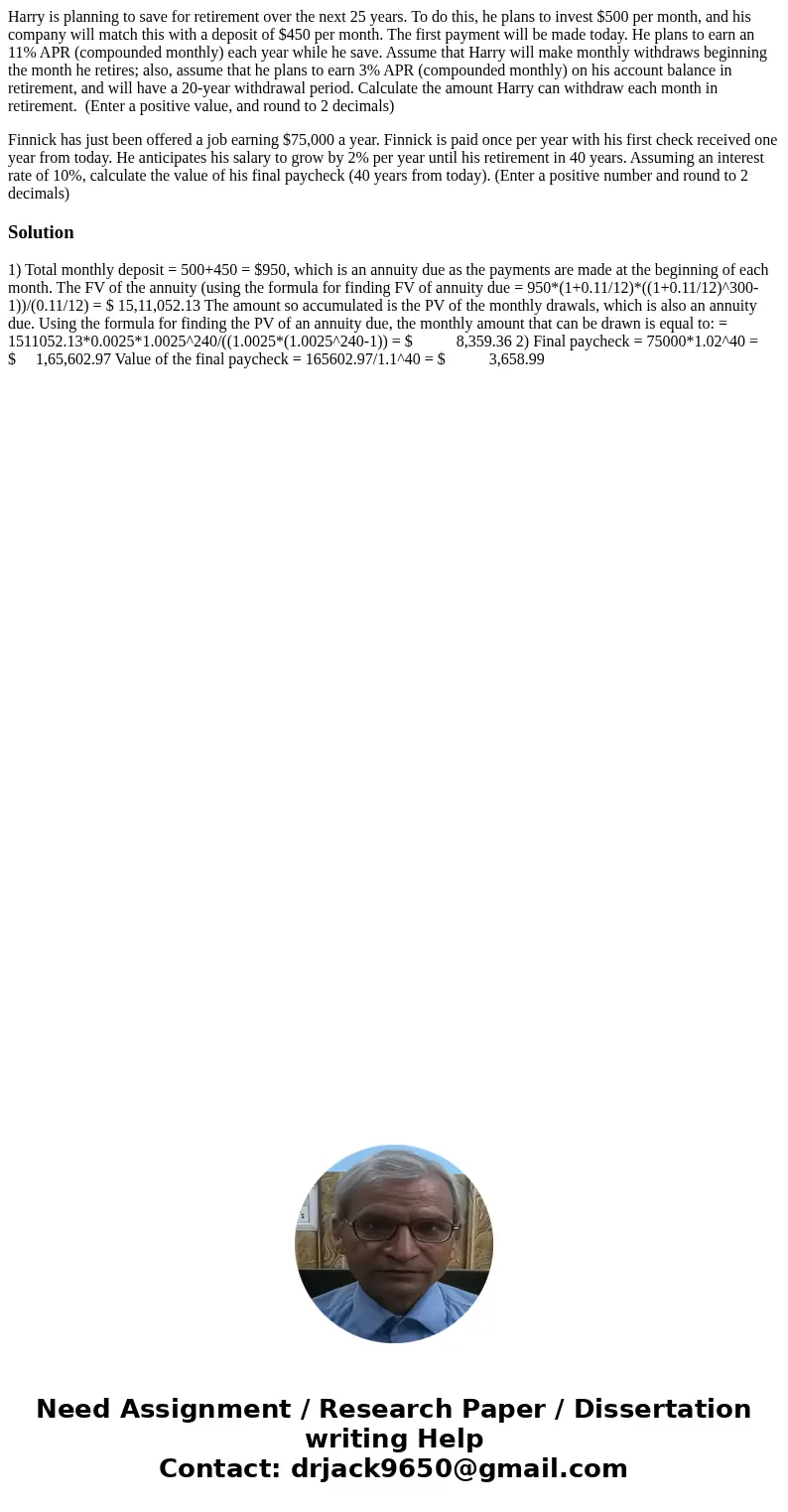Harry is planning to save for retirement over the next 25 ye
Harry is planning to save for retirement over the next 25 years. To do this, he plans to invest $500 per month, and his company will match this with a deposit of $450 per month. The first payment will be made today. He plans to earn an 11% APR (compounded monthly) each year while he save. Assume that Harry will make monthly withdraws beginning the month he retires; also, assume that he plans to earn 3% APR (compounded monthly) on his account balance in retirement, and will have a 20-year withdrawal period. Calculate the amount Harry can withdraw each month in retirement. (Enter a positive value, and round to 2 decimals)
Finnick has just been offered a job earning $75,000 a year. Finnick is paid once per year with his first check received one year from today. He anticipates his salary to grow by 2% per year until his retirement in 40 years. Assuming an interest rate of 10%, calculate the value of his final paycheck (40 years from today). (Enter a positive number and round to 2 decimals)
Solution
1) Total monthly deposit = 500+450 = $950, which is an annuity due as the payments are made at the beginning of each month. The FV of the annuity (using the formula for finding FV of annuity due = 950*(1+0.11/12)*((1+0.11/12)^300-1))/(0.11/12) = $ 15,11,052.13 The amount so accumulated is the PV of the monthly drawals, which is also an annuity due. Using the formula for finding the PV of an annuity due, the monthly amount that can be drawn is equal to: = 1511052.13*0.0025*1.0025^240/((1.0025*(1.0025^240-1)) = $ 8,359.36 2) Final paycheck = 75000*1.02^40 = $ 1,65,602.97 Value of the final paycheck = 165602.97/1.1^40 = $ 3,658.99
 Homework Sourse
Homework Sourse